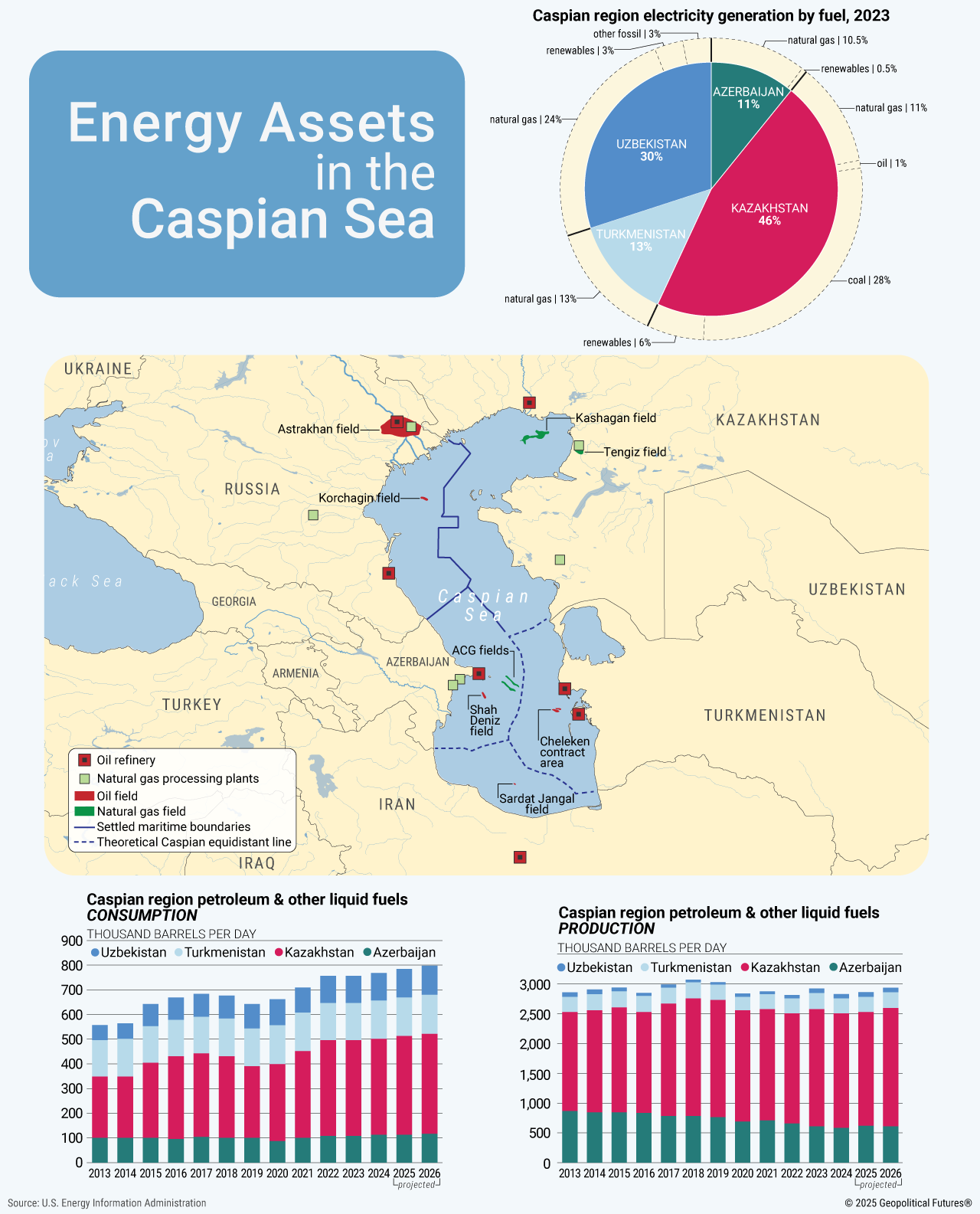For decades, uncertainty over whether the Caspian was a lake or a sea – and the resulting treaty disputes – chilled investment in the region. Thirst for profit pushed states to seek clarification, and a 2018 treaty largely settled the rules: It defined territorial waters and fishery zones, allowed adjacent or opposite coastal states to divide the seabed and subsoil by agreement, and permitted undersea pipelines and cables. The benefits have been significant. For example, more than $6 billion worth of investment has poured in to develop two oil fields in Kazakhstan’s section of the Caspian, Kalamkas-Sea and Khazar. Considering the growth in its energy production over the past decade, Kazakhstan has also looked to diversify its export routes via the Caspian. However, some boundaries are still unresolved. The 2018 convention established the rules and procedures for delimiting the seabed and subsoil, but it’s up to the littoral states themselves to find agreement.

